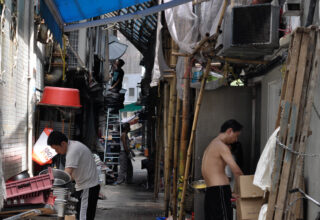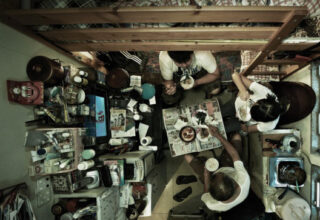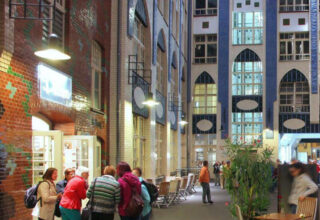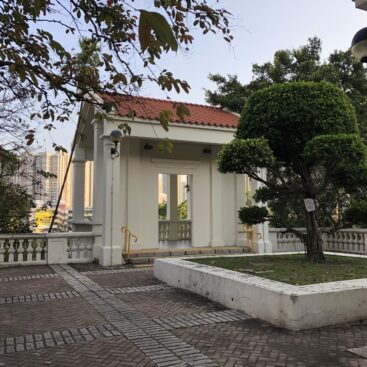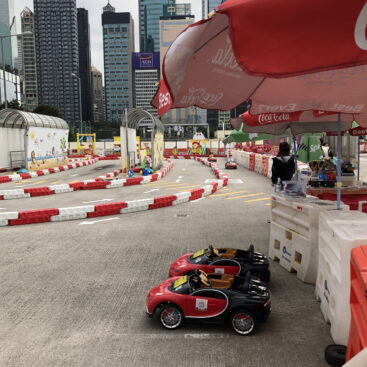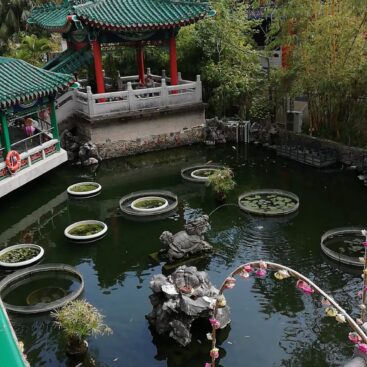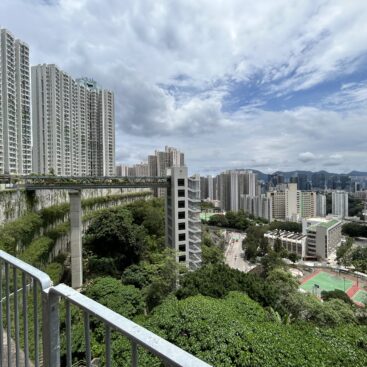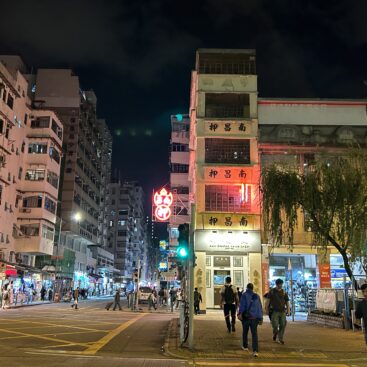A discussion on reviewing the present and future Hong Kong urban strategy
Essay_Urban Planning
Is Open Space a Sin in the 19th Century?
This drawing is a classical representation of urban intervention in European city streetscapes, conveying the idea of returning open and courtyard spaces to the public. The painter aims to promote the ideal of introducing more recreational facilities and parks for city beautification, thus improving the living environment for residents. It represents a visionary master plan for future city planning. Why does it serve as an indicator of Hong Kong’s urban planning?
Programmatic Approach—Fighting for More Open Spaces
From a programmatic perspective, there is a breakthrough in challenging the traditional European village cluster model, which typically had little open space and high urban density. The drawing erases some of the dense urban fabric and introduces canals and boulevards, as well as a church at the southern side of the map. The church garden is designed with grid-patterned pillars for worship, along with ample open space. The diagonal walkways lead people into the garden, creating a visionary concept of a garden city to improve the poor living conditions in European cities at that time.
Symbolic Approach—A Punch to Capitalism
Symbolically, I suggest that the painter wants to address the need for communal spaces that should be accessible to the majority of people, including for worship purposes. This idea is further connected to the rise of the industrial revolution. The relentless pursuit of profits by cooperative industries led to the encroachment of large pieces of land, resulting in land, air, and water pollution. During this period, a large number of individuals flocked to the cities in search of job opportunities, leading to overcrowding, illegal housing, and poor hygiene conditions. The drawing depicts the north-eastern part of the settlement as relatively compact due to the proximity of factories, which offered extensive job opportunities. It reinforces the notion that more open space should be provided for the community.
Symbolic Approach—The Will of God
Another interesting idea presented in the drawing is the emphasis on the importance of the church. Symbolically, it represents the rise of Christianity and implies that people should respect the places designated by God, including religious institutions. These institutions held significant power to govern, even surpassing the government. These clues shed light on emerging social issues during that time.
Insight into the Current Situation of Hong Kong
Based on the drawing, I propose that the painter advocates for city beautification. A city should be more open-minded and rebuild the relationship of people’s interactions and the proximity of neighbors. When considering the current environment of Hong Kong, thousands of people reside in congested subdivided flats, experiencing poor living and hygiene conditions. Additionally, the increase in population in old towns like Mong Kok has resulted in insufficient open space for the public. The notion of treating open space as a commodity should be reconsidered, and people should have a greater say in designing their communal environment. The clusters should be more diverse and integrated with highly accessible paths, creating an urban vernacular that matches with sustainable community development.
In summary, this drawing truly reviews the adverse effects brought about by dense urban environments and takes a significant step towards improving the poor conditions of that time. It challenges the traditional European housing style and density, becoming a role model for future urban planning in Hong Kong.
References
Rudy Uytenhaak (2008) “A City full of Spaces”, “Drawing by numbers”, Cities full of space—Qualities of density, 010 Publishers, Rotterdam, pp: 47-52, pp: 69-78
Rufina Wu and Stefan Canham (2008) “Rooftop Housing in Hong Kong”, Portraits From Above-Hong Kong’s Informal Rooftop Communities, Peperoni Books, pp: 246-248
Joan Ockman, Moshe Safdie, Avner Shalev and Elie Wiesel Özüekren A.S. and Karahan-Ergöz E. (2006) ‘’The Mount of Remembrance”, Yad Vashem Moshe Safdie-The Architecture of Memory, Lars Muller Publishers, pp: 64-85
Morris Adjmi (1991) Aldo Rossi Architecture: 1981-1991, Princeton Architectural Press, pp: 118-129
Photo Reference
Photo 1: The congested village space, www.sos.org.au/
Photo 2: The compacted living environment, http://www.scmp.com/news/hong-kong/article/1248501/hong-kongs-subdivided-flat-dwellers-pay-more-rent-less-space
Photo 3: Typical alley in Hong Kong, https://beautifultangiblethings.files.wordpress.com/2014/10/hkmarket-4.jpg
Photo 4: The idea of courtyard interaction in Berlin Hackesche Hoefe, http://www.nh-hotels.com/multimedia/images/43260299_l_1289x518-tcm41-125101-32.jpg


